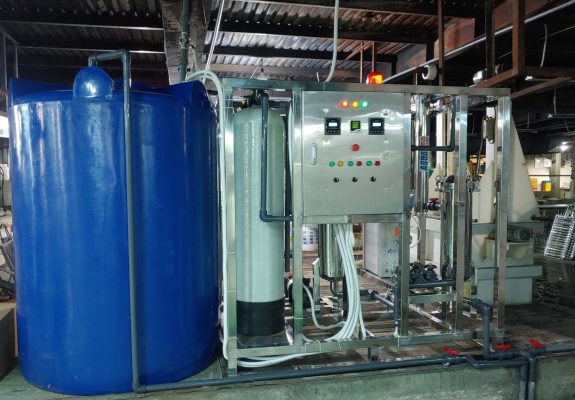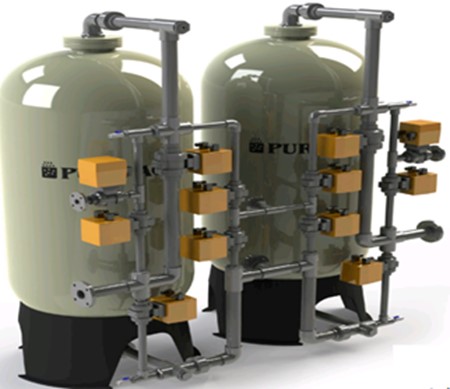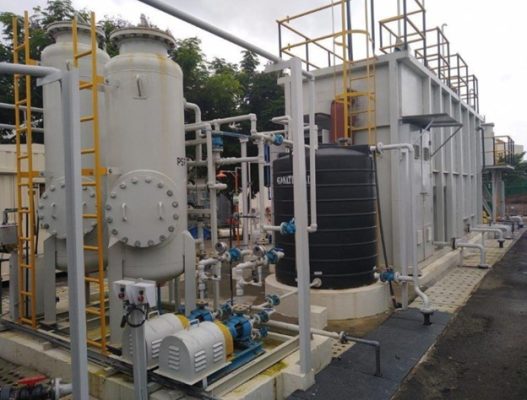Demineralized water and purified water treatment solutions for industries, always providing the highest water quality with the most economical investment costs.
What is demineralized water?
Demineralized water is water that exists with an ion content in water below 10 μs/cm. The quality of demineralized water will directly affect the efficiency and quality of output products. Therefore, factories require advanced demineralized water treatment technology from developed countries.

Depending on the manufacturing industry, product type and usage standards, demineralized water is classified. Demineralized water is often used for thermal power, pharmaceuticals, electroplating, hospitals, laboratories, boilers, etc.
Currently applied demineralized water treatment methods, depending on the requirements for demineralized water quality, use and combine different treatment technologies.
The principle of this method is to use heat to boil water to vapor state. The vaporized water will be condensed by the cooling system.
Dissolved ions, insoluble ions and other impurities in the water will be retained in the unvaporized part.
However, distilling once is not good at removing ions, depending on the purpose and usage requirements, it can be distilled twice or three times. This method often consumes energy and is expensive.
Is a method of producing DI water. Working through the ion exchange process by using cation and anion resin beads to control the ions in the water. The cation beads will attract positive ions (Ca + +, Mg + +, Na +, …) and release OH- ions. The anion beads will attract negative ions (HCO3-, Cl-, SO4-, …) and release H+ ions.
Then the OH- and H+ ions then combine together to form water (H+ + OH- = H2O)
It is a water treatment technique that combines ion exchange technique, ion membrane exchange technique, electromotive force technique (electric dialysis technique).
This technique takes advantage of ion exchange to desalinate, overcoming the polarity of electrodialysis which makes desalination not thorough. At the same time, using electrodialysis to electrolyze water into H and OH ions, causing the exchange resin beads to recover the function that has been degraded through chemicals to be restored.
It is a new technique that has been widely used since the 80s. After more than two decades of development, EDI technique has dominated the ultra-clean water treatment market in North America and Europe.
It is a system with one tank (column) containing H+ cation exchange resin and another tank containing OH- anion exchange resin.
Water flows through the cation column, and all cations are exchanged for H+ ions. To maintain the charge balance in the water, for each monovalent cation, e.g. Na+, one H+ ion is exchanged and for each divalent cation, e.g. Ca2+ Mg2+, two H+ ions are exchanged.
This principle also applies to anion exchange. The decationized water flows through the anion column. During this time, all negatively charged ions are exchanged for OH- ions which then combine with H+ ions to form water (H2O)

Also known as Mixed Bed Water Polishing System.
The Mixed Bed method is commonly used in the water filtration industry to polish water to the quality of demineralized water, often designed in combination with the RO reverse osmosis filtration system. The operating principle of the Mixed Bed system is based on the ion exchange method.

Regardless of the industry, thanks to our long experience, TVTS will design customized solutions for different types of biomass. We are sure to satisfy our customers.












